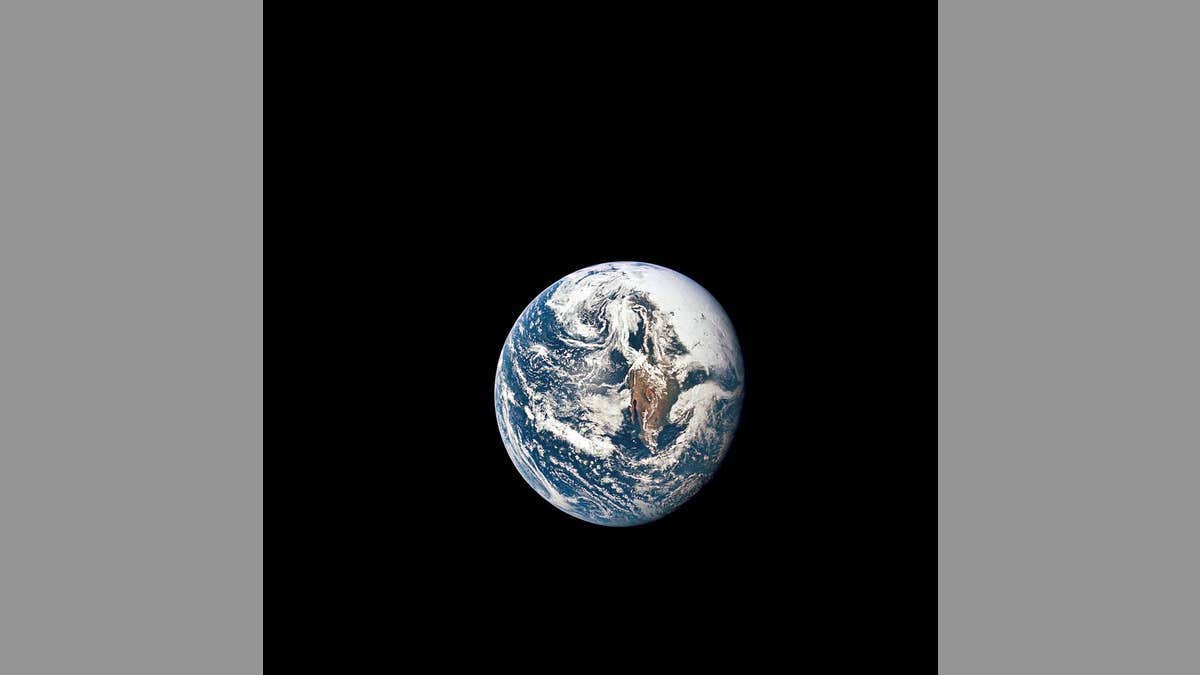Fox News Flash top headlines for August 13
Fox News Flash top headlines are here. Check out what's clicking on Foxnews.com.
Digital content is on track to equal half of Earth’s mass by 2245, according to new research.
The research by Dr. Melvin Vopson, a senior lecturer at the U.K.’s University of Portsmouth, highlights the physics of information creation and the demands of storing vast quantities of digital data.
'FOOL'S GOLD' COULD ACTUALLY BE VALUABLE IN THIS WAY, RESEARCHERS FIND

A view of Earth from 36,000 nautical miles away as photographed from the Apollo 10 spacecraft (NASA)
“Assuming the current growth trends in digital content continue, the world will reach a singularity point in terms of the maximum digital information possibly created and the power needs to sustain it, called the information catastrophe,” Vopson writes, in a paper published in AIP Advances, the journal of the American Institute of Physics.
The “information catastrophe” will add to existing global challenges such as climate, environment, population, food, health, energy and security, according to the researcher.
DID GERMAN PHYSICISTS ACCIDENTALLY DISCOVER DARK MATTER IN 2014?
The study examines the “incredible” growth of digital bits, the unit used to measure computer data. In the singularity point, more digital bits will be created than atoms on the planet. “At the same time, the digital information production alone will consume most of the planetary power capacity,” Vopson writes.
With current data storage densities, the number of bits produced per year and the size of a bit compared to the size of an atom, at a rate of 50% annual growth, the number of bits would equal the number of atoms on Earth in approximately 150 years, according to a press release on the research. Vopson says it would be approximately 130 years until the power needed to sustain digital information creation would equal all the power currently produced on our planet. By 2245, the research says, half of Earth's mass would be digital information mass.
CLICK HERE TO GET THE FOX NEWS APP
“In the extreme case scenario when our digital information production growth is sustained at 50% per year, by the year 2070, we will have 1 kg of digital bits content on the planet stored on all the traditional and cloud data storage centers and endpoints such as PCs, smart-phones, and Internet of Things (IoT) devices,” the author explained, in the research study. “Similarly, at 50% growth per year, by the year 2245, half of the planet’s mass will be made up of digital bits.”
Follow James Rogers on Twitter @jamesjrogers





















